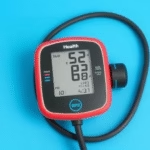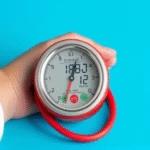In this article, we will be discussing whether hot tubs are bad for high blood pressure. Many individuals with this health condition are often cautious about the use of hot tubs and spas. The interaction between the heat in a hot tub and high blood pressure can be complex and requires careful consideration.
High blood pressure, also known as hypertension, is a condition where the force of blood against the artery walls is consistently too high. This can lead to various health complications, including heart disease, stroke, and kidney problems. The temperature and the therapeutic effects of hot tubs can have several implications for individuals dealing with hypertension, including potential benefits and risks. Understanding how hot tubs affect vascular health can empower individuals with hypertension to make informed decisions regarding their use.
Understanding High Blood Pressure and Its Effects
High blood pressure is a condition that occurs when the force of blood against the arteries is elevated. Risk factors for high blood pressure include age, genetics, diet, sedentary lifestyle, and excessive alcohol intake. When left unmanaged, high blood pressure can lead to serious health issues, including heart disease, stroke, and kidney failure. It’s essential to monitor blood pressure regularly and adopt healthy lifestyle changes to manage the condition effectively. Understanding hypertension and its implications allows individuals to mitigate their risks and seek appropriate treatment, leading to better overall health.
Hot Tubs and Blood Circulation
Using a hot tub can have both positive and negative impacts on blood circulation. The warm water can help dilate blood vessels, potentially lowering blood pressure temporarily. This vasodilation improves blood flow to various body parts, promoting relaxation and reducing muscle tension. However, excessive exposure to high temperatures can put stress on the cardiovascular system, particularly for individuals already managing high blood pressure. It is crucial for those with hypertension to monitor their body’s response in hot water, ensuring their safety by limiting exposure and consulting healthcare professionals.
Heat Exposure and Blood Pressure
Heat exposure from a hot tub has direct effects on blood pressure. Initially, the heat tends to lower blood pressure by dilating blood vessels. However, prolonged exposure can lead to dehydration, which may result in an increase in blood pressure. It’s vital to strike a balance; enjoying short sessions in the hot tub, while ensuring adequate hydration can help mitigate these effects. Listening to your body is essential, and adjusting the water temperature may be necessary to maintain comfort and safety during hot tub use.
Benefits of Hot Tubs for People with High Blood Pressure
Though caution is warranted, there are benefits to hot tub use for those with high blood pressure. The therapeutic effects of heat can promote relaxation, thereby reducing stress and anxiety—two contributors to hypertension. Hot tubs can also provide relief from muscle and joint pain, enhancing overall well-being. Regular use, within safe limits, can contribute positively to a wellness routine, but consultation with a healthcare provider is recommended to ensure safety during use.
Risks Involved in Hot Tub Use
The risks associated with hot tub use for individuals with high blood pressure should not be disregarded. Prolonged exposure to high temperatures can lead to dizziness, fainting, and exacerbation of cardiovascular issues. Monitoring time spent in the hot tub and paying attention to symptoms is crucial for everyone’s safety. Additional risks include the potential for dehydration and overheating, emphasizing the need for moderation and caution.
Precautions to Take When Using a Hot Tub
When using a hot tub with high blood pressure, there are several precautions to consider. Start by limiting time in the water to prevent overheating. Regular breaks and staying hydrated are essential. It’s advisable to check blood pressure regularly before and after hot tub usage to monitor any potential fluctuations. Consulting with a doctor for personalized recommendations can enhance safety and provide a clearer understanding of one’s health limits regarding hot tub use.
Hydration: The Key to Safe Hot Tub Use
Hydration plays a crucial role when using a hot tub, especially for individuals with high blood pressure. The warm environment can lead to excessive sweating and loss of fluids, potentially impacting blood pressure levels. Drinking water before, during, and after hot tub sessions is important to maintain hydration. It helps prevent dehydration and allows the body to cope with the heat, reducing the risk of spikes in blood pressure due to fluid loss.
Expert Opinions on Hot Tub Use and Hypertension
Consulting with healthcare professionals provides valuable insights into hot tub use for individuals with high blood pressure. Many experts believe that, if used responsibly, hot tubs can be part of a wellness routine. However, it’s crucial to consider individual health conditions, medications, and overall fitness levels. Tailored advice ensures that hot tub use enhances relaxation and well-being without compromising cardiovascular health.
Alternative Relaxation Methods for Hypertension
For those concerned about hot tubs, there are several alternative relaxation methods to consider. Activities such as yoga, meditation, and deep breathing exercises can effectively promote relaxation and lower stress levels. Incorporating regular physical activity, balanced nutrition, and healthy sleep patterns can also support blood pressure management. Exploring various methods allows individuals to find what works best for their needs while ensuring a focus on overall health.
Conclusion
Determining whether hot tubs are bad for high blood pressure is a nuanced topic. While hot tubs can offer therapeutic benefits, they also pose risks, particularly without proper precautions. Understanding the effects of heat on blood circulation and monitoring one’s response is essential for individuals living with hypertension. Hydration, time management, and medical advice are crucial in creating a safe hot tub experience. Each person’s health situation is unique. By considering these factors, individuals can make informed choices about hot tub use, promoting relaxation while managing blood pressure effectively. Keeping lifestyle factors in check such as diet, exercise, and regular health checkups can further enhance overall well-being for those with high blood pressure.
Frequently Asked Questions
1. Can hot tubs lower blood pressure?
Hot tubs may temporarily lower blood pressure by causing blood vessels to dilate in response to heat, enhancing circulation. However, prolonged exposure can lead to dehydration, potentially increasing blood pressure.
2. How long can someone with high blood pressure stay in a hot tub?
It is generally advised to limit hot tub use to 15-20 minutes. Individuals should frequently check their comfort levels and exit if feeling light-headed or uncomfortable.
3. Should I speak to my doctor before using a hot tub?
Yes, consulting a healthcare provider is recommended to receive personalized advice and ensure that hot tub use aligns with individual health needs.
4. Can dehydration affect blood pressure?
Yes, dehydration can lead to increased blood pressure as the body adjusts to conserve fluids. Staying hydrated is essential, especially when using hot tubs.
5. Are there safe alternatives to hot tubs for relaxation?
Yes, alternative relaxation methods such as yoga, meditation, or nature walks can be beneficial in managing stress and supporting heart health.
Further Reading
What Type of Psychotherapy Is Best for Anxiety?







